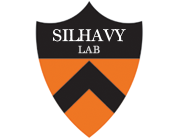Genetic evidence for parallel pathways of chaperone activity in the periplasm of Escherichia coli
Type
The periplasm of Escherichia coli contains many proteins proposed to have redundant functions in protein folding. Using depletion analysis, we directly demonstrated that null mutations in skp and surA, as well as in degP and surA, result in synthetic phenotypes, suggesting that Skp, SurA, and DegP are functionally redundant. The Deltaskp surA::kan combination has a bacteriostatic effect and leads to filamentation, while the degP::Tn10 surA::kan combination is bactericidal. The steady-state levels of several envelope proteins are greatly reduced upon depletion of a wild-type copy of surA in both instances. We suggest that the functional redundancy of Skp, SurA, and DegP lies in the periplasmic chaperone activity. Taken together, our data support a model in which the periplasm of E. coli contains parallel pathways for chaperone activity. In particular, we propose that Skp and DegP are components of the same pathway and that SurA is a component of a separate pathway. The loss of either pathway has minimal effects on the cell, while the loss of both pathways results in the synthetic phenotypes observed.

